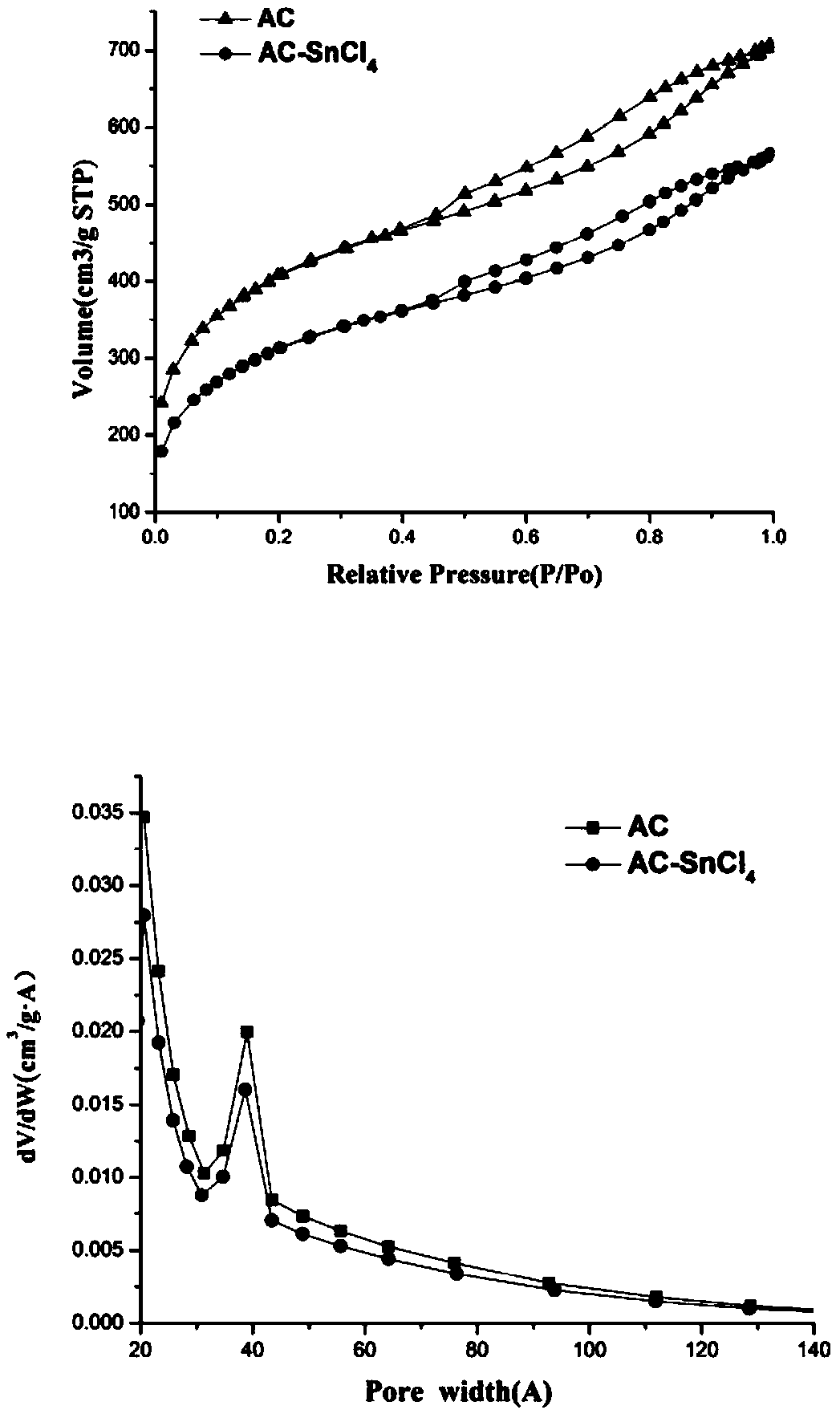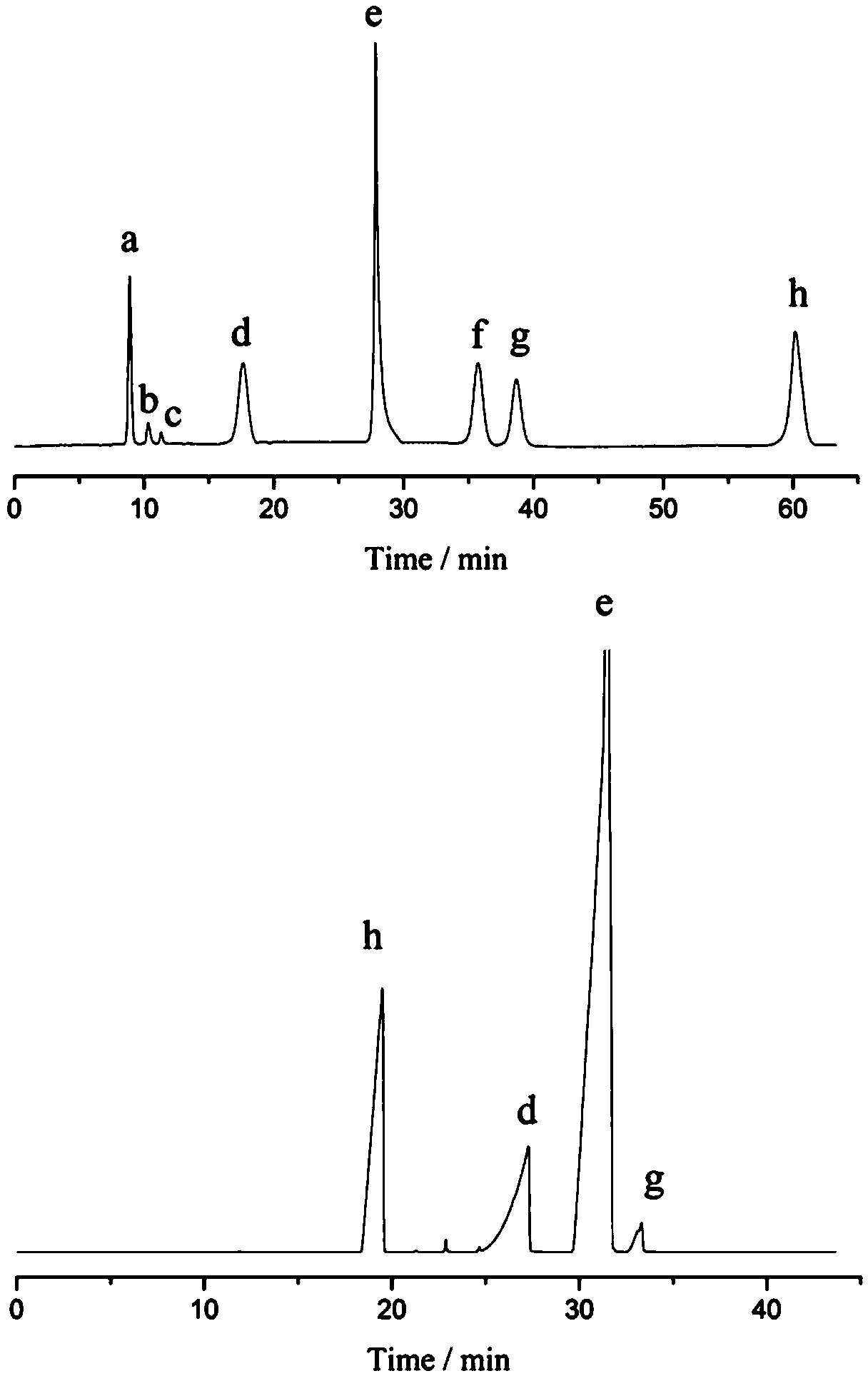Method for preparing 5-hydroxymethylfurfural through directed liquefaction of wood fiber
A technology of hydroxymethylfurfural and lignocellulosic, applied in the field of preparing 5-hydroxymethylfurfural, which can solve the problems of high corrosiveness of liquid inorganic acid catalysts, difficulty in converting lignocellulosic raw materials, harsh reaction conditions, etc., and achieve high pretreatment efficiency Easy to operate, excellent thermal and chemical stability, simple pretreatment effect
- Summary
- Abstract
- Description
- Claims
- Application Information
AI Technical Summary
Problems solved by technology
Method used
Image
Examples
Embodiment 1
[0045] The first step: pretreatment of lignocellulosic raw materials: firstly, the lignocellulosic raw material willow is washed with deionized water and dried, and then crushed to about 200 mesh by a high-speed pulverizer, and the mass ratio of lignocellulosic raw material powder and sulfolane is 1:1 / water composite solvent (wherein the mass ratio of sulfolane to water is 90:10) is mixed with a mass fraction of 1% solid acid catalyst and placed in a pre-mixing tank, stirred at room temperature to a slurry state, ready for use.
[0046] Step 2: Preparation of solid acid: Put the purchased granular activated carbon in a three-necked flask, dissolve tin chloride in deionized water as a solvent, then pour it into the three-necked flask, heat to 120°C under magnetic stirring, reflux for 0.1h, and filter The resulting filter cake was thoroughly washed with the above-mentioned solvent and dried in vacuum before use.
[0047] Step 3: Hydrolysis of lignocellulosic raw materials: Add ...
Embodiment 2
[0050] The first step: pretreatment of lignocellulosic raw materials: first, the lignocellulosic raw material poplar is washed with deionized water and then dried, then crushed to about 200 mesh by a high-speed pulverizer, and the mass ratio is 1:5 lignocellulosic raw material powder and The γ-valerolactone / water composite solvent (the mass ratio of sulfolane to water is 90:10) is mixed with a solid acid catalyst with a mass fraction of 10% and placed in a premixing tank, stirred at room temperature until it reaches a slurry state, and is ready for use.
[0051] Step 2: Preparation of solid acid: Put the purchased granular activated carbon in a three-necked flask, dissolve zinc chloride in the solvent anhydrous methanol and pour it into the three-necked flask, heat to 70°C under magnetic stirring and reflux for 0.2h, Filter and thoroughly wash the obtained filter cake with the above-mentioned solvent and dry it in vacuum before use.
[0052] Step 3: Hydrolysis of lignocellulos...
Embodiment 3
[0055] The first step: pretreatment of lignocellulosic raw materials: first, the lignocellulosic raw material poplar is washed with deionized water and then dried, then crushed to about 200 mesh by a high-speed pulverizer, and the mass ratio is 1:10 lignocellulosic raw material powder and N,N-dimethylformamide / water composite solvent (wherein the mass ratio of sulfolane to water is 90:30) is mixed with a mass fraction of 5% solid acid catalyst and placed in a pre-mixing kettle, stirred at room temperature to a slurry state, ready for use .
[0056] Step 2: Preparation of solid acid: Place the purchased granular activated carbon in a three-necked flask, dissolve magnesium chloride in the solvent absolute ethanol and pour it into the three-necked flask, heat to 80°C under magnetic stirring for 0.3h, filter and use The obtained filter cake was thoroughly cleaned with the above solvent and dried in vacuum before use.
[0057] Step 3: Hydrolysis of lignocellulosic raw materials: A...
PUM
 Login to View More
Login to View More Abstract
Description
Claims
Application Information
 Login to View More
Login to View More - R&D
- Intellectual Property
- Life Sciences
- Materials
- Tech Scout
- Unparalleled Data Quality
- Higher Quality Content
- 60% Fewer Hallucinations
Browse by: Latest US Patents, China's latest patents, Technical Efficacy Thesaurus, Application Domain, Technology Topic, Popular Technical Reports.
© 2025 PatSnap. All rights reserved.Legal|Privacy policy|Modern Slavery Act Transparency Statement|Sitemap|About US| Contact US: help@patsnap.com



